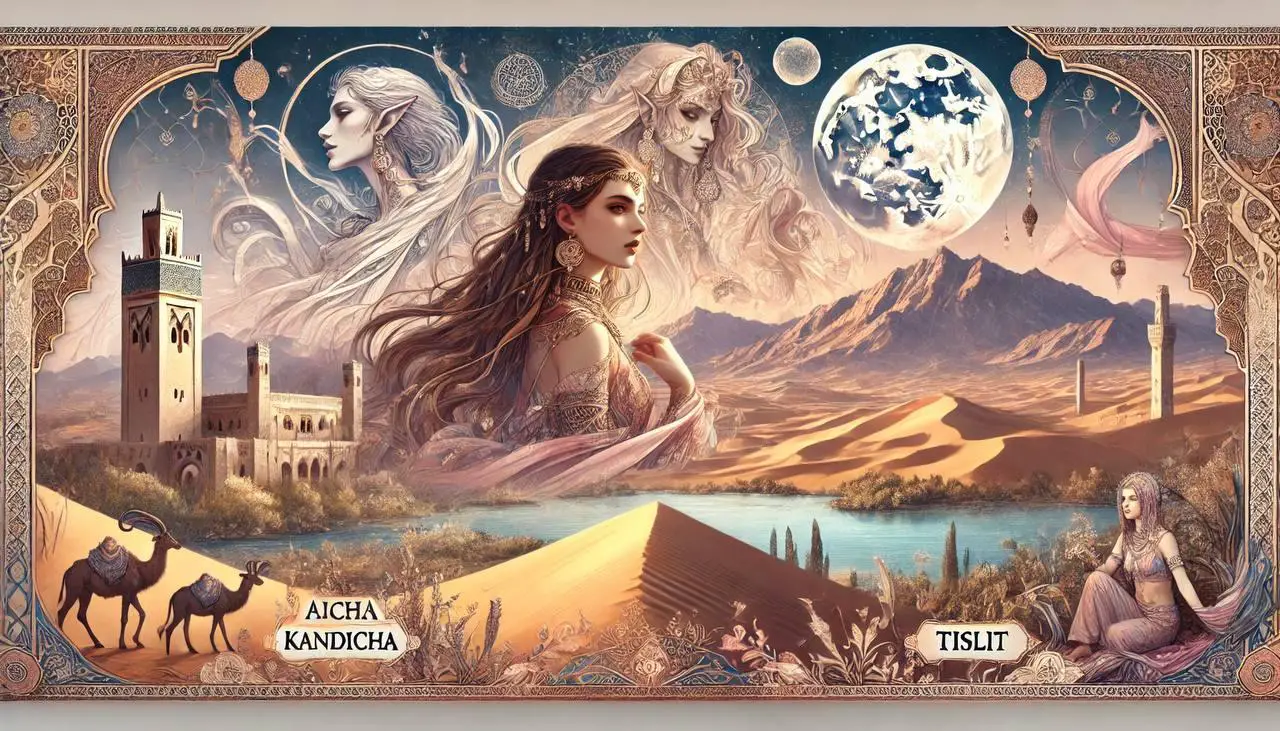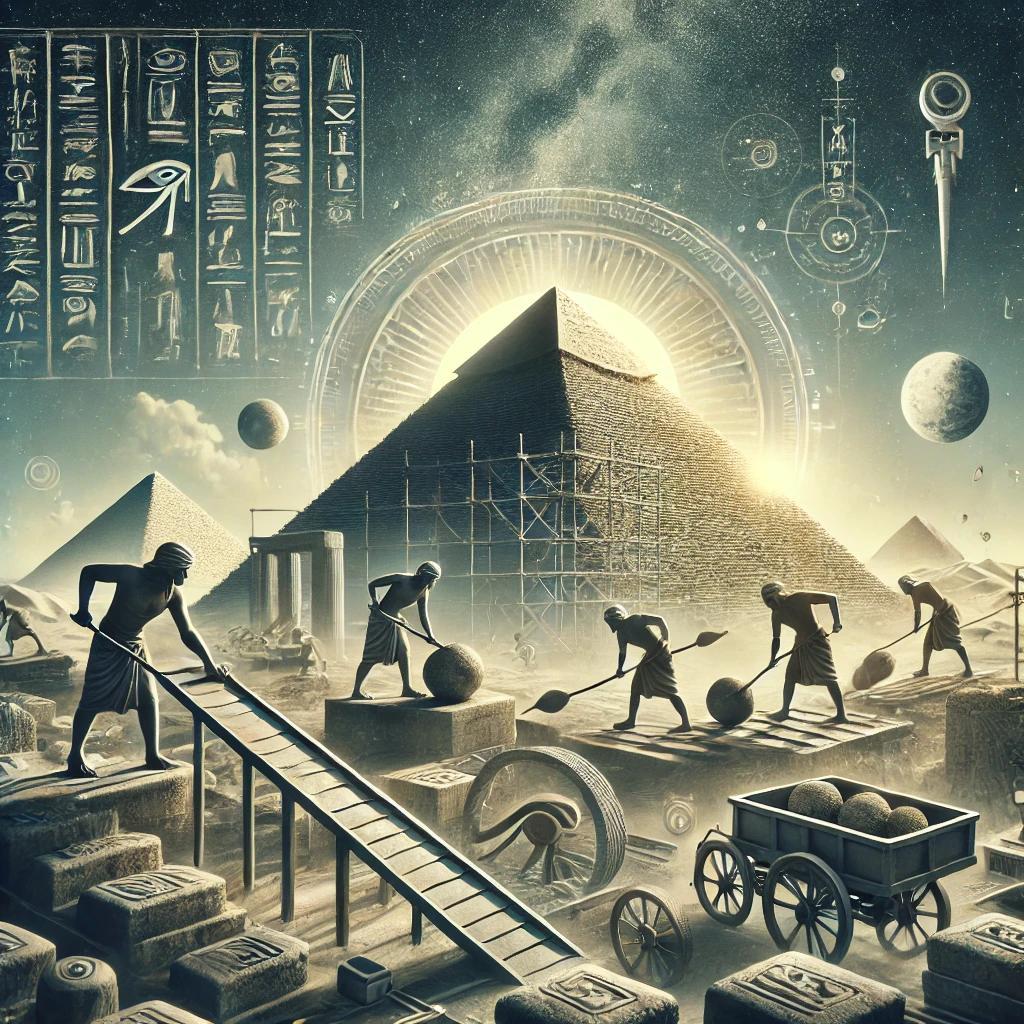Exploring Moroccan Mythology: From Aicha Kandicha to the Djinn
Category: Culture
Date: 11 months ago
Views: 802
Top 7 Moroccan Mythology, Folklore, Myths, and Legends
Morocco, a land of rich cultural heritage and history, boasts an array of captivating myths, legends, and folklore that have been passed down through generations. These stories reflect the diverse cultural tapestry of the country, blending Berber, Arab, and sub-Saharan African influences. Here are seven of the most intriguing Moroccan myths and legends:
1. Aicha Kandicha
Aicha Kandicha, also known as Lalla Aicha, is one of Morocco's most famous and feared supernatural figures. She is often described as a beautiful woman with long hair and an alluring appearance, but with the legs of a goat or camel. According to legend, Aicha Kandicha seduces men and leads them to their doom. Many stories tell of her taking revenge on those who have wronged her or her family. This myth serves as a cautionary tale, warning against the dangers of temptation and the unknown.
2. The Legend of Isli and Tislit
The story of Isli and Tislit is a Berber tale of two star-crossed lovers, often compared to Romeo and Juliet. Isli, a young man, and Tislit, a beautiful woman, fell deeply in love, but their families were sworn enemies. Unable to be together, they cried so much that their tears formed two lakes in the Atlas Mountains, named Isli and Tislit. This tragic love story symbolizes the power of love and the devastating impact of familial and societal conflict.
3. The Djinn of the Sahara
Djinn, supernatural beings made of smokeless fire, are a significant part of Islamic mythology and feature prominently in Moroccan folklore. In the vast and mysterious Sahara Desert, tales abound of djinn who can shape-shift, possess people, and create mirages to deceive travelers. These spirits are both feared and revered, often believed to inhabit deserted places and abandoned ruins. Stories of encounters with djinn serve to explain mysterious events and reinforce the belief in the unseen world.
4. The Treasure of the Red Mountain
In the Anti-Atlas region, there is a legend about a hidden treasure buried beneath a red mountain. According to the tale, a wealthy Berber king buried his immense treasure to protect it from invaders. The mountain is said to be guarded by spirits and can only be accessed by those who possess a pure heart and unwavering courage. Many have tried to find the treasure, but none have succeeded, making it a symbol of the elusive nature of wealth and the importance of virtue over material riches.
5. The Tale of Sidi Hmad Ou Moussa
Sidi Hmad Ou Moussa was a renowned Sufi saint and a respected healer in Morocco. He is often depicted as a wise and benevolent figure with miraculous powers. Legends tell of his ability to heal the sick, control the weather, and even communicate with animals. His shrine, located in the Souss region, is a pilgrimage site where people come to seek blessings and miracles. The tales of Sidi Hmad Ou Moussa highlight the deep spiritual and mystical traditions within Moroccan culture.
6. The Cemetery Mule
The legend of the Cemetery Mule, or "Boughirat al-Maqbarah," is a popular tale in Moroccan folklore. According to the story, this supernatural mule appears in cemeteries at night, terrifying those who dare to venture near. It is said to be the spirit of a person who committed grave sins during their lifetime and was transformed into a mule as punishment. The Cemetery Mule serves as a grim reminder of the consequences of immoral behavior and the importance of living a righteous life.
7. The Bought
The Bought is a mythological figure that represents a person who has made a pact with dark forces to gain supernatural abilities or wealth. These individuals are believed to possess extraordinary powers, but at a great cost, often involving the sacrifice of their soul or loved ones. The Bought is a cautionary tale about the dangers of greed and the moral compromises one might face in pursuit of power and riches.
Conclusion
These myths and legends are not just stories; they are a reflection of Moroccan culture, values, and the collective imagination of its people. They offer insights into the fears, hopes, and dreams of generations past and continue to be a source of fascination and inspiration for many. Whether cautionary tales, love stories, or accounts of supernatural beings, these narratives are an integral part of Morocco's rich cultural heritage.
















0 Comments, latest